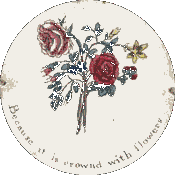No other place has the glamour and induces the air of show-business as Hollywood. The history of Hollywood begun early in the 20th century and it marks the modernized American society that is rich in innovation and history.
In the 1800’s, movies and motion pictures began with the creation of motion toys that were designed to trick the eyes so that they could see movement from a display of still frames in a quick continuity, for example, zoetrope and thaumatrope.


Eadweard Muybridge invented the first real motion picture in 1872 where he placed twelve cameras on a race track. He then rigged the cameras in capturing shots quickly as a horse was moving in front of the lenses. In 1885, George Eastman and William H Walker invented the first film for motion photography, which significantly contributed to the advancement of motion photography. Auguste and Louis Lumiere were two brothers who shortly after came up with Cinematographe which was a hand-held machine that had a camera, printer and projector all in one.
The 1900’s was the time that the motion picture technology and film advanced. Backdrops, visual flow, and exploration of editing motivated upcoming films to keep pushing into the new and creative territory. The Great Train Robbery was one of the greatest movies ever to be created at this time, and it was made by Edwin S Porter in 1903. At around 1905, an easy way to watch movies was created by Nickelodeon where you could pay 5 cents for theater seat. Nickelodeon was of great help to the movie industry because it helped to move to the 1920’s when the industry became popular and this movement made it possible to increase the public view of film hence generating more money for filmmakers together with the widespread use of theatres all over which were used to screen the propaganda of World War I. A new revolution of film “Hollywood” was on the rise as World War I ushered the United States in to a new traditional boom.
The first and viral movie
As per the industry myth, the first and viral movie to be released was Cecil B. DeMille’s The Squaw Man in the year 1914. By this time Hollywood was fast becoming the face of America, all its glamour could no longer be hidden. The movie industry began to flourish in the 1920’s significantly. The birth of the ‘movie star’ also happened around this time and it was possible to make hundreds of movies per year now. The birth of Hollywood marked a rise of an American force. Hollywood was now considered a cultural icon that was now set apart from all the rest of Los Angeles luxury, emphasizing leisure and the unending party scenes. All movie studios were birthed in Hollywood. This was a great move to the American public image in the fast-growing movie industry. The earliest and most productive movie companies were Metro Goldwyn Mayer, Paramount, Warner Brothers Pictures, RKO and 20th Century Fox. All of those companies had their own studios and film production sets. Others that were considered noteworthy were Universal, Columbia and United Pictures even though they never owned theatres. Disney, Republic, and Monogram were taken as third-tier.
This age brought about two different roles in the industry which is that of the Director and the Star. Directors started being highly recognized for using and making trademarks with personal styles while they were making movies. Previously, this could never have been possible because of limitations brought about by the technology of filmmaking. On the other hand, movie stars were becoming very famous because of publicity and shifts in Americans new trend of praising faces that they saw on big screens.
Golden age of Hollywood
1930 was now the Golden age of Hollywood, and it was its most significant breakthrough. A new era in the industry began as sound in film was introduced. Now, it was easy to create different genres such as action, documentaries, musicals, comedies political statement films, horror movies, and westerns. The fact that they could now use audio tracks in all motion pictures initiated the leverage of Hollywood in World War II and also created a very new viewer dynamic. However, the 1940’s became a very tough time for the industry because of the attack on Pearl Harbor by the Japanese. Regardless of that, the industry got a rebound because technology again advanced and now special effects could be used, the quality of sound was far improved, and now there were color films. All this made movies appealing and modern.
The American culture significantly changed in the 1950’s and all over the world. After the World War, the whole American family grew in wealth, and this growth saw a change in social trends, the rise of pop tradition, changes in music and TV sets were now introduced. An estimate of 10 million homes owned a television set by 1950. There was a significant social change by 1960, at this time, movies put more focus on fun, rock and roll, fashion, societal shifts, for example, the civil rights movement and a significant transition in cultural values. A time of change had finally come in how the world perceived America and its culture. In 1963 an approximate of 120 movies were released which marked the slowest year in the film industry. The pull of televisions caused low profits which led to a decline in production. Movie companies became wise and started making money in other areas like TV series, recording music and making movies for TV.
The past creativity of film industry became relevant and highly marketable by 1980. Very few of 1980’s films became classics because they were considered generic and were only designed for audience appeal. The future of the films looked very unsteady, and the production cost took a high rise.
The 2000’s is where a new revolution in movie and technology industry happened. With the immense change in technology, we cannot tell what the future holds for us, but we can be sure to look forward to different and incredible technological advances in the film industry.

